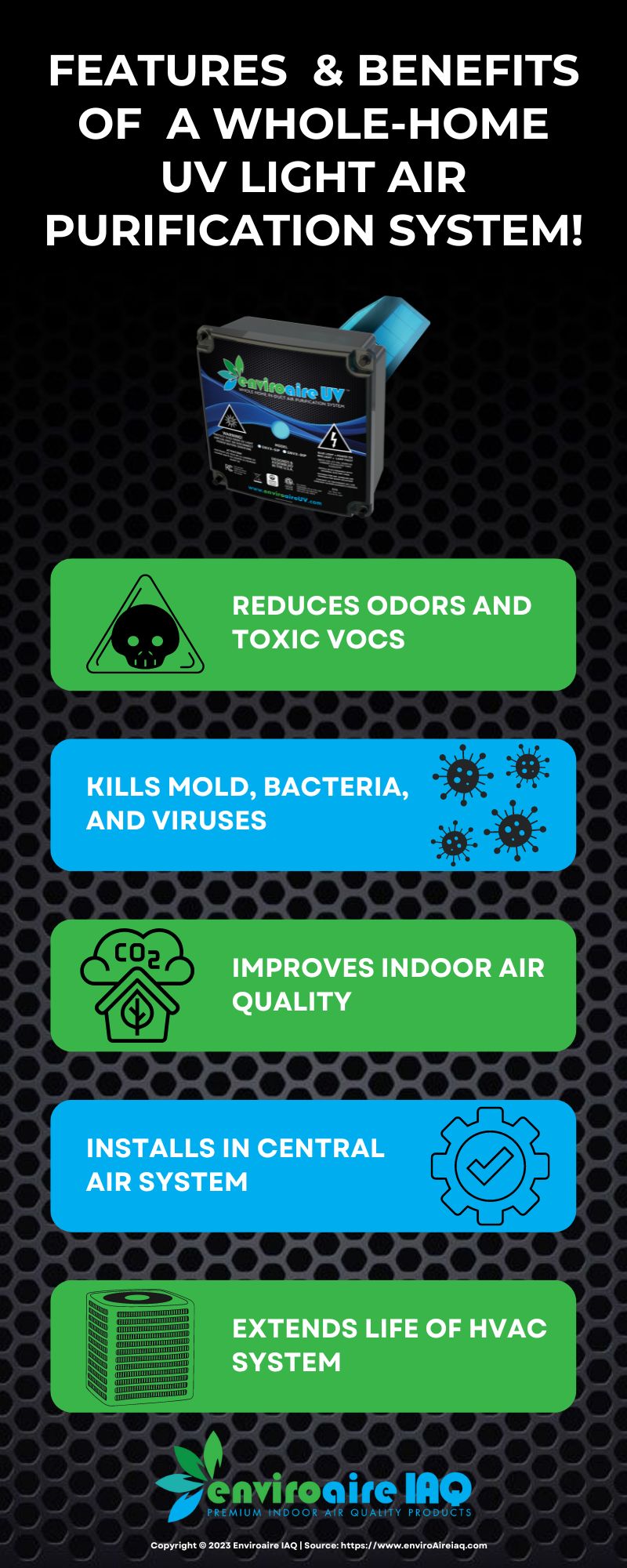Some Known Incorrect Statements About Uvc Light
Some Known Incorrect Statements About Uvc Light
Blog Article
The 20-Second Trick For Uvc Light
Table of ContentsExamine This Report about Uvc LightUvc Light Things To Know Before You BuyUnknown Facts About Uvc LightThe 5-Minute Rule for Uvc LightRumored Buzz on Uvc LightThe 8-Second Trick For Uvc Light
A new kind of ultraviolet light that might be risk-free for individuals took less than five minutes to reduce the level of indoor air-borne microorganisms by more than 98%, a joint research by researchers at Columbia University Vagelos University of Physicians and Surgeons and in the U.K. has actually located. Also as microorganisms remained to be splashed into the space, the level stayed very low as long as the lights got on.However up until currently these researches had actually only been performed in tiny speculative chambers, not in full-sized spaces simulating real-world conditions. In the current research study, scientists at the University of St. Andrews, College of Dundee, College of Leeds, and Columbia College checked the efficacy of far-UVC light in a huge room-sized chamber with the very same air flow rate as a regular office or home (regarding 3 air adjustments per hour).
The efficiency of various techniques to decreasing interior infection levels is typically determined in regards to comparable air adjustments per hour. In this study, far-UVC lamps produced the matching of 184 equivalent air exchanges per hour. This goes beyond any other technique to decontaminating busy indoor spaces, where 5 to 20 equivalent air changes per hour is the very best that can be attained virtually.
Uvc Light Can Be Fun For Anyone

The main parameters of UV-C sanitation are wavelength, dosage, relative moisture, and temperature. There is no consensus about their optimum values, but, as a whole, light at a high dosage and a range of wavelengths having 260 nm is favored in an atmosphere at area temperature level with reduced relative humidity. This light can be generated by mercury-vapour, light-emitting diode (LED), pulsed-xenon, or excimer lamps.
UV-C sanitation systems have promising functions and the possible to improve in the future. UV-C disinfection need to currently be thought about for low-level instead than top-level disinfection.
One more application emerged in 1910 when UV light was used to decontaminate water. Nevertheless, the technology was not very trusted at the time and it took even more technical growths before UV water sanitation became prominent once again in the 1950s [ 2] Nowadays, UV light is utilized for water, air, food, surface, and medical tools sanitation.
Top Guidelines Of Uvc Light
DNA, RNA, or healthy proteins of a micro-organism absorb UV light, with a peak absorbance around 260 nm [6] This results in the disturbance of DNA or RNA, causing the inactivation of the micro-organism. UV-C-induced DNA disruption frequently consists of the bonding of 2 neighbouring thymine (or cytosine) bases rather of the traditional connecting of a base with its complementary base on the various other strand.

Dark repair, on the various other hand, requires numerous enzymes and nutrients for energy [6] It view is necessary to know whether last inactivation results have actually taken into consideration the incident of awakening considering that it might result in 60% of the attained inactivation being turned around [7] Furthermore, anomalies can occur upon UV-C direct exposure since this direct exposure can cause the origination of intra-strand cyclobutyl-pyrimidine dimers in DNA [ 6] The UV-C area is used for disinfection however there is no agreement on the specific optimal wavelength. Light at 260 nm can cause the most disruption. Different micro-organisms are most at risk to a little different wavelengths.
The Best Strategy To Use For Uvc Light
It also has an extra advantage by decreasing photoreactivation with a reduction of photolyase [9] On the other hand, it has technical implications since the total energy of the beam is after that separated over all present wavelengths. A micro-organism that is prone to 254 nm light will be suspended a lot more by a lamp that emits exclusively light at 254 nm than a light that emits a wavelength range at equal complete power.
Direct exposure times of 1045 min for area disinfection and 25 s to 5 min for clinical equipment were come across in literary works.
Even more, the result of a lamp reduces with time, look at here so it is recommended to calculate the dosage at the end of light life, which is representative of a worst-case situation. The dose additionally influences the amount of photoreactivation. Quek et al. discovered that the percent of photoreactivation decreased from 5.31% to 0% for a rise in dose from 1.6 to 19.7 mJ/cm2 [8]
The impact of temperature level depends on the light resource.
The Greatest Guide To Uvc Light


This is known as far UV-C modern technology and is a fairly brand-new disinfection method with minimal understanding about its efficiency.
In research study, the results on pulsed versus constant UV-C sanitation efficiency article source differ. When comparing pulsed and continual light it is necessary to maintain various other variables such as wavelength and dosage constant. Nyangaresi et al. and Sholtes et al. both discovered that pulsed or continual light sent out by LEDs caused comparable log10 decreases [15,28]
See This Report about Uvc Light
In situation ozone is not needed for sanitation, a customized light can be made use of. For mercury-vapour lights, doped quartz glass or specialized soft glass can strain short-wave UV-C light. For pulsed-xenon, drugged quartz can be made use of too [30] UV-C has appealing attributes for disinfection such as automatic disinfection, being much less lengthy than commonly utilized handbook or chemical disinfections, leaving no damaging residuals, and being eco-friendly (if no mercury-vapour lights are made use of) [31,32]
Report this page